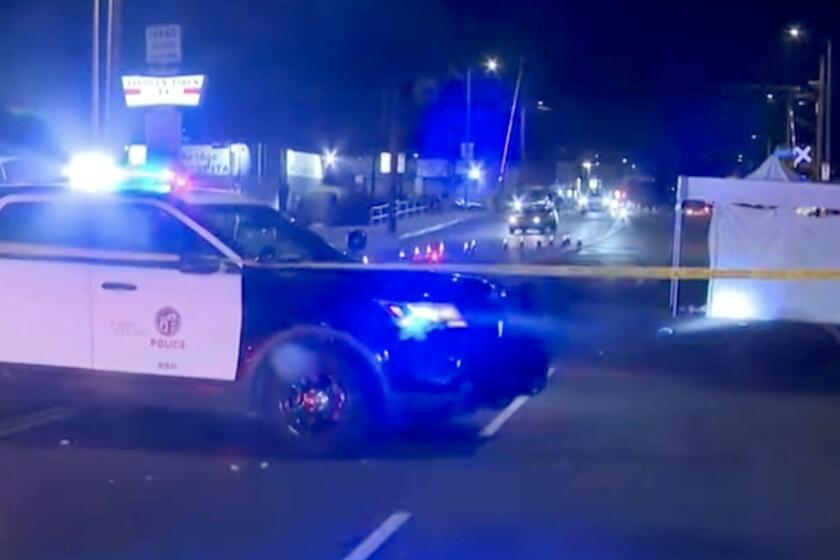The Mystical All-Star Band boogied down the Katrina blues
WHEN ASKED why he set Christian hymns to barroom ballads, William Booth, founder of the Salvation Army, had a ready answer: “Why should the devil have all the best tunes?”
Booth, who could have written the book on marketing religion, believed the best way to save souls was through the body. Get toes tapping, fingers snapping, and then roll out the message.
It’s no mystery why so many religious traditions use smells and bells to focus the faithful. Music and images mainline the Big Picture that, most of the time, is hopelessly fuzzy or blocked by static. The peace that passes understanding defies words, which is why, for many people, God — or whatever one calls the experience of Otherness — grows in the heart.
Perhaps that’s what organizers of the World Festival of Sacred Music-Los Angeles had in mind when they sponsored a series of concerts in 1999. Now, six years later, their tagline is “Open your heart and listen,” and for the last two weeks about 1,000 artists performing at 43 events helped audiences do just that.
I was ready for almost anything when, during a recent festival performance, composer Robert Een and the Mystical All-Star Band launched into “The Reward,” a New Orleans-inflected, bluesy-gospel composition. Keyboardist Billy Goodrum’s stride piano put me in mind of late nights at Tipitina’s — the legendary New Orleans club, and just as I settled into the effusive glow of happy memories, the song’s words jolted me back to the auditorium in the Central Library downtown.
“Life is precious, live every moment as if it is your last.”
I hadn’t expected an admonition from Milarepa, an 11th century Buddhist saint from Tibet. My recollections of Big Easy music, food and merriment dissolved into a flood called Katrina. What had become of so many people? Had they understood life is precious? Were each of their moments lived as if it were the last?
“The reward is to die without regret,” Een sang, and my Big Picture musings melted into a litany of lost opportunities. Why wasn’t I more patient with my family? Couldn’t I squeeze in some volunteer work? How did my life make a difference?
And then the kicker — why did I feel so much more at a concert than I did at most worship services?
Like so many members of the information class (media professionals, bloggers, entertainers, writers, teachers), I undervalue anything I can’t say, think or read. But long before Mel Gibson was a twinkle in his daddy’s eye, Catholic churches sponsored annual Passion plays — the story of Jesus’ last days — not just to teach followers about their faith but also to help them feel it. Watching the performance, spectators experienced the bone-deep truth of suffering and redemption.
Information Age Passion plays also reveal the power of visual narratives.
Remember Elian Gonzales, the little Cuban refugee whose relatives unsuccessfully fought to keep him in Miami? Images, both real and constructed, created a striking triptych of religion and politics, suffering and salvation: Elian at sea miraculously rescued (it was said) by dolphins, Elian ensconced with a loving family, Elian removed at gunpoint and returned to Cuba.
Recent photographs similarly reverberate in a place beyond words. Rooftops peeking from floodwaters. A woman’s body floating face down. A young man, in chest-high water, clutching a bag of food.
What does it mean to be human? Why do we suffer? What can we do?
Those who want to turn Katrina into a debate about federal prerogatives and the future of FEMA miss a larger point. The images sidestep rational argument.
When Een wrote “The Reward,” he could not have foreseen that the juxtaposition of Western music and Eastern message could open a listener to deeper comprehension of a tragedy. But it is the power of music, as with images, that allows our hearts to see what our minds may miss.
“Paul talked about things seen and unseen,” Een told me, referring to the New Testament apostle. “Sacred music can speak to those things unseen.”
More to Read
Sign up for Essential California
The most important California stories and recommendations in your inbox every morning.
You may occasionally receive promotional content from the Los Angeles Times.










